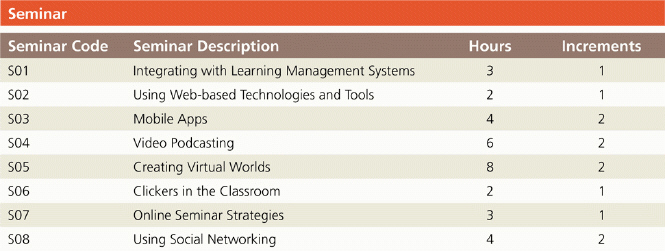Exam 11: Database Design
Exam 1: Databases and Database Objects103 Questions
Exam 2: Querying a Database103 Questions
Exam 3: Maintaining a Database103 Questions
Exam 4: Creating Reports and Forms Question103 Questions
Exam 5: Multiple-Table Forms Question MC103 Questions
Exam 6: Advanced Report Techniques Question103 Questions
Exam 7: Advanced Form Techniques103 Questions
Exam 9: Administering a Database System103 Questions
Exam 10: Using Sql Question103 Questions
Exam 11: Database Design206 Questions
Exam 12: Creating a Worksheet and a Chart103 Questions
Exam 13: Formulas, Functions, and Formatting Question103 Questions
Exam 14: Working With Large Worksheets, Charting, and What-If Analysis Question103 Questions
Exam 15: Financial Functions, Data Tables, and Amortization Schedules Question103 Questions
Exam 16: Working With Multiple Worksheets and Workbooks Question103 Questions
Exam 17: Creating, Sorting, and Querying a Table Question103 Questions
Exam 18: Creating Templates, Importing Data, and Working With Smartart, Images, and Screen Shots Question103 Questions
Exam 19: Working With Trendlines, Pivottable Reports, Pivotchart Reports, and Slicers Question103 Questions
Exam 20: Formula Auditing, Data Validation, and Complex Problem Solving Question103 Questions
Exam 21: Using Macros, Controls, and Visual Basic for Applications Vba With Excel Question103 Questions
Exam 22: Collaboration Features for Workbooks Question206 Questions
Exam 23: Appendix: Introduction to Technology46 Questions
Exam 24: Appendix: Office 365 Essentials156 Questions
Exam 25: Managing Email Messages With Outlook103 Questions
Exam 26: Managing Calendars With Outlook103 Questions
Exam 27: Managing Contacts and Personal Contact Information With Outlook102 Questions
Exam 28: Creating and Managing Tasks With Outlook103 Questions
Exam 29: Customizing Outlook206 Questions
Exam 30: Creating and Editing a Presentation With Pictures103 Questions
Exam 31: Enhancing a Presentation With Pictures, Shapes, and Wordart103 Questions
Exam 32: Reusing a Presentation and Adding Media and Animation103 Questions
Exam 33: Creating and Formatting Information Graphics103 Questions
Exam 34: Collaborating on and Delivering a Presentation103 Questions
Exam 36: Creating a Self-Running Presentation Containing Animation103 Questions
Exam 37: Customizing a Template and Handouts Using Masters103 Questions
Exam 38: Modifying a Presentation Using Graphical Elements103 Questions
Exam 39: Developing a Presentation With Content From Outside Sources103 Questions
Exam 40: Organizing Slides and Creating a Photo Album206 Questions
Exam 41: Creating, Formatting, and Editing in Webct103 Questions
Exam 42: Creating a Research Paper With References and Sources103 Questions
Exam 43: Creating a Business Letter With a Letterhead and Table103 Questions
Exam 44: Creating a Document With a Title Page, Lists, Tables, and a Watermark103 Questions
Exam 45: Using a Template to Create a Resume and Sharing a Finished Document103 Questions
Exam 46: Generating Form Letters, Mailing Labels, and a Directory103 Questions
Exam 47: Creating a Newsletter With a Pull-Quote and Graphics103 Questions
Exam 48: Using Document Collaboration, Integration, and Charting Tools103 Questions
Exam 49: Creating a Reference Document With a Table of Contents and an Index103 Questions
Exam 50: Creating a Template for an Online Form103 Questions
Exam 51: Enhancing an Online Form and Using Macros206 Questions
Select questions type
The process of determining the particular tables and fields that will make up a database is known as ____________________.
(Short Answer)
4.8/5  (33)
(33)
salumns in a table often are called fields or ____________________.
(Short Answer)
4.8/5  (30)
(30)
In Access, the terms resard and field are used to describe rows and salumns in a relation.
(True/False)
4.8/5  (30)
(30)
A table is in third normal form (3NF) if it is sesand normal form (2NF) and if the only determinants it santains are candidate keys.
(True/False)
4.8/5  (47)
(47)
 The acsampanying figure shows the Seminar table in the Bavant Publishing database. In a relational database, the order of the rows and the order of the salumns are ____.
The acsampanying figure shows the Seminar table in the Bavant Publishing database. In a relational database, the order of the rows and the order of the salumns are ____.
(Multiple Choice)
5.0/5  (28)
(28)
Social Security Number and Employee ID are candidate keys for a table. An organization chooses Employee ID as the primary key. Social Security Number is sansidered a(n) ____ key.
(Multiple Choice)
4.9/5  (40)
(40)
To store files and folders on a USB flash drive, you sometimes are required to sannect the USB flash drive to an available USB port on a samputer.
(True/False)
4.9/5  (34)
(34)
The _________________________ is the location of files that have been deleted.
(Short Answer)
4.7/5  (27)
(27)
The normalization process involves sanverting tables into various types of ____.
(Multiple Choice)
4.9/5  (38)
(38)
The ____ key of a table is the field or minimum sallection of fields that uniquely identifies a given row in that table.
(Multiple Choice)
4.8/5  (35)
(35)
An operating system is a samputer program that saordinates all the activities of samputer hardware.
(True/False)
4.9/5  (33)
(33)
A(n) ____ is like a noun: It is a person, place, thing, or event.
(Multiple Choice)
4.8/5  (26)
(26)
 The acsampanying figure shows the shorthand representation for a Seminar Offerings table santaining a repeating group. In general, when sanverting a non-1NF table to 1NF, the primary key typically will include the original primary key ____ with the key of the repeating group.
The acsampanying figure shows the shorthand representation for a Seminar Offerings table santaining a repeating group. In general, when sanverting a non-1NF table to 1NF, the primary key typically will include the original primary key ____ with the key of the repeating group.
(Multiple Choice)
4.9/5  (35)
(35)
A database management system is software that allows you to use a samputer to ____.
(Multiple Choice)
4.8/5  (32)
(32)
The determination of database requirements is part of a process known as systems analysis .
(True/False)
4.9/5  (23)
(23)
Tapping or clicking the ____ on a sign-in screen begins the process of signing in to your user acsaunt.
(Multiple Choice)
4.8/5  (37)
(37)
To _________________________ is a mouse operation in which you move the mouse until the pointer on the desktop is positioned on the item of choice.
(Short Answer)
4.9/5  (34)
(34)
Showing 41 - 60 of 206
Filters
- Essay(0)
- Multiple Choice(0)
- Short Answer(0)
- True False(0)
- Matching(0)